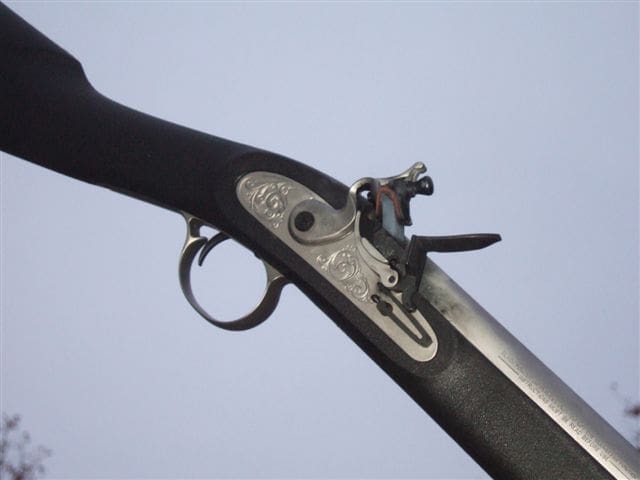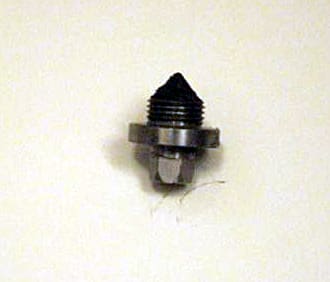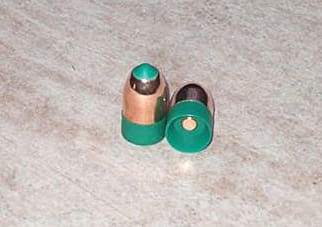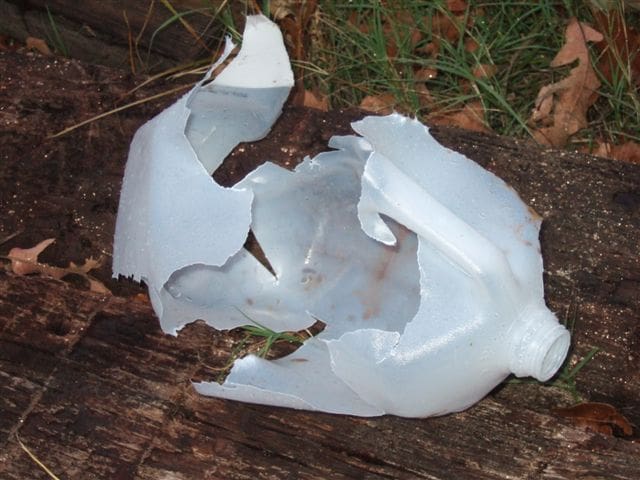I own and shoot four black powder muzzleloaders–three pistols and a rifle. Years ago, I crossed over to the dark side of black powder because of the history and tradition of it. The clouds of thick, stinky gray smoke, fiery jets of muzzle blast and really loud explosions were just the sooty icing on my ballistic heritage cake.
As much as I enjoy black powder guns, though, I never gave the so-called “modern muzzle loaders” a second glance. Synthetic stocks and fiber optic sights just seemed wrong on a smoke pole. I was after a sense of Guildford Courthouse or Gettysburg, not Glockishness. Such warped anachronisms were mere tools designed to help deer hunters extend their season by a few weeks–not that I’m against more chances to put fresh venison in the freezer. But still, I thought these modern muzzleloaders just flat out lacked elan.
And then, the Thompson Center Fire Storm flintlock appeared at my doorstep. As I unboxed it, I thought it was everything I loathed about modern hunting muzzleloaders. Black synthetic stock. Aluminum ramrod. Garish fiber optic sights–blazing red front and glowing green rear–and, most shocking of all, a matte stainless steel finish.
It looked like escapees from Pimp My Ride had time-traveled and invaded the St. Louis rifle shop of Jake and Sam Hawken, circa 1816.
Inside that showy exterior lurked a simple, but effective design that allegedly enhances the rifle’s performance. The Fire Storm’s fire, (or fiiiiiiiiiiiiii-yah” ala the Ohio Players) is all the hotter due to the cone shaped projection on the inside of the breech plug. That cone creates air spaces that help pelletized powders to combust more quickly and focuses the energy of the explosion from the rear forward. That ensures every grain of propellant gives up its stored energy to the flight of the bullet. The idea sounded nice on the Thompson Center web site, but I wasn’t totally convinced.
Despite my misgivings, I searched far and wide for some Holy Black so I could fire up the Fire Storm.
And she caught on like the blue blazes.
The first thing I did was replace the supplied agate flint with a good English brown flint I had laying around. A couple of dry fires with the cut agate produced a modest amount of yellow sparks, and I just knew a good old-fashioned English brown could do better.
The English brown sparked so well that the first five shots boomed out during a light but sustained November sprinkle. I kept both the lock and my powder dry by loading the rifle inside my barn, and then walking to the firing line with my jacket draped over the firing mechanism. But even in the moist weather, the flintlock still fired quick and hot. Maybe there was something to that little cone thingy at the end of the chamber after all?
I waited for a drier, sunnier day to see what kind of accuracy I could wring out of the Fire Storm. For this test, I opted for the traditional load of a .490 round ball of pure lead wrapped in a lubed cloth patch atop 80 grains of FFg. The only rest I used was a handy tree trunk that I leaned against–striving to stay as Dan’l Booney as possible.
From 50 yards, I produced a seven-shot group about three-and-a-half inches wide. The fifth shot edged out to the left because of a hang fire. It was my fault, as I wanted to see how long the Fire Storm could go without any cleaning. A “hang fire” means when the flint sparked off the priming charge in the pan, there was a noticeable delay, or hang, between the first ignition and the detonation of the main charge. Sort of a “chuff….wait for it….BOOM!” instead of the “chu-BOOM!” of a clean, well-tuned flintlock.
So I swabbed the bore and wiped off the frizzen and pan and the next two shots went off cleanly and quickly. If you look at the group, you’ll see that two bullets went into the same hole in the topmost portion of the group. And yes, I know the sights were off the to right a bit. I just didn’t have the time or ammo to shoot and adjust and shoot and adjust and shoot and adjust to get all the holes in the middle for nicer, prettier pictures. Subtract the flier due to my purposefully not cleaning or swabbing, and I got six shots into 2.4 inches at 50 yards. That is plenty accurate to put fillet of Bambi on the table. (mmmm…..fillet of Bambi….mmmmmm)
The fiber optic sights helped a lot, especially as the sun dipped below the rim of the Ozark Mountains and my handy tree rest cast a gloomy shade over my shooting position. The red and green sights positively gleamed in the twilight.
The next thing I learned about the Fire Storm? It is, by far, the easiest muzzleloader to clean I’ve ever shot. It’s designed to come apart simply. The breech plug twists out quickly with the supplied wrench. The touch-hole liner is a breeze to remove with the supplied Allen key. And the stainless steel finish is so slick and smooth that I could literally wash the fouling away with just hot water out of a bathtub faucet. A pass or two with a bit of old t-shirt wrapped around the brass jag that screws into the end of the ramrod and voila! She is clean!
Since the stock is black synthetic instead of highly polished walnut inlaid with artful brass work, I could just hose the whole thing down with hot water, wipe here and there, and dry it off with a towel. Q-tips helped me get the moisture out of the crooks and crannies, and I used Mrs. Hill’s hair dryer (thanks, Honey) for a quick once-over to dry out any hidden wet spots that could cause rust or corrosion.
I obtained a package of 245 grain Powerbelt Aerotip muzzle loader bullets to see how the Fire Storm handled conicals. According to Thompson Center’s website, the Fire Storm’s 1-in-48 twist rifling is optimized for both round balls and conical bullets. Maybe it was me, or maybe this particular rifle just didn’t like the 245 grain Powerbelts, but I wasn’t terribly impressed with the group I got a 50 yards using conicals. It was about as wide as the group I shot with the patched round ball loads, but it opened up more vertically.
But the conical bullets did load easily, even after the bore had been fouled by four or five shots in a row. The Fire Storm is just plain easy to load, as the first half-inch or so of the muzzle is left unrifled precisely to make it easier to start the ball or bullet down the barrel.
I upped the powder charge to the next-to-maximum load listed in the Fire Storm manual–140 grains of FFg–wondering how increased velocity might affect the group size. The group stayed about the same, but stoked with 140 grains of black powder, the Fire Storm goes into beast mode. The recoil becomes stout, but not unbearable. The manual says that 140 grains of black powder pushes a 240 grain bullet around 1846 fps, with a muzzle energy of 1816 ft/lbs. That velocity and energy puts the Fire Storm flintlock on par with the hottest .454 Casull rounds.
Or to put that into rifle terms, the venerable 45-70 Sharps, often used for buffalo hunting in the Old West, pushed a .45 caliber bullet with a charge of 70 grains of black powder. With a maximum charge, the Fire Storm will toss a .50 caliber bullet with a powder charge twice as big as the Sharps. Boom, indeed.
Just for kicks, I tried out the manual’s maximum round ball load of 110 grains of powder on a gallon jug full of water. The resulting carnage must have been truly impressive, but I missed it because of the huge cloud of thick white smoke. I had to wait several seconds for my view to clear before I found the jug, torn almost in half, about five feet up the safety berm on my backyard range.
I tried different combinations of propellant in the pan and in the chamber, with some interesting results. When I primed the pan with Jim Shockey’s Gold black powder substitute, I could make the gun fire, but barely. The sparks from the frizzen set off the priming charge of Jim Shockey’s Gold, but it took at least two or three seconds and made the classic hissing fuse noise everybody knows from cartoons or Inspector Clouseau movies. Just three shots with that combo was plenty of education for me.
With Jim Shockey’s Gold substitute in the chamber, and FFFFg Holy Black in the pan, the rifle fired a lot more quickly, but still not as fast as using real black powder both in the chamber and the pan. The best combo was (duh!) real black powder, just like the good Lord intended for flintlocks.
There are a couple of points about the Fire Storm that I think leave a little to be desired. First, the trigger. I know that Thompson Center can do very nice double set triggers. I once possessed a .50 caliber Thompson Center caplock Hawken rifle with lots of brass, figured wood and crisp, sensitive double set triggers. But the trigger on the Fire Storm is a simple single trigger that feels more stiff and heavy than I think it should. I’m sure Thompson Center has its reasons for not putting double set triggers on the Fire Storm, but I believe that addition would make an already good flintlock only better.
A second issue I encountered was that the screw that held the flint in the jaws of the dog seemed to loosen after a few shots. I lost one of my good Brown English flints because the screw came loose, and the flint took flight during recoil. I also had to tighten the screw that holds the hammer onto the lock a few times, as it also came loose with repeated firing. A little Blue Loctite could easily remedy both situations.
If you can get past the Fire Storm’s postmodern appearance, you’ll find it to be an accurate, easy-to-clean muzzleloader suitable for hunting or black powder fun on the range. The sights are very easy to see and adjust, and the stainless steel finish makes removing powder residue as simple as adding water. The trigger is a bit heavy, and the screws might require a little fiddling, but then again, if you didn’t want a gun that required fiddling and tweaking and flint knapping and touchhole picking, you’d just get an AK and be done with it, wouldn’t you?
SPECIFICATIONS
Caliber: .50
Action: Flint Lock
Barrel Length: 26″
Sights: Competition click adjustable steel rear sight and ramp fiber optic front sight.
Stock: Black Composite
Trigger: Single trigger with large trigger guard bow.
Overall Length: 41-3/4″
Rifling Twist: 1 in 48″
Weight: 7 lbs.
Price: About $500 street
RATINGS (out of five stars):
Style * * * *
Not for the hard core traditionalist. The silver and black look grows on me a little more each time I shoot it. Instead of shaking your head at the stainless steel, just keep saying to yourself, “Man, is this sucker easy to clean!”
Portability * * * *
Very light to carry through the woods all day long. Not overly long. Well balanced and quick to the shoulder.
Trigger * * *
The trigger’s a bit heavy and stiff. It’s not a deal breaker, but a double set trigger would have been absolutely dreamy.
Reliability * * * *
So long as you keep it clean, charged with black powder, and adorned with a nice sharp flint, the Fire Storm will set the world ablaze.
Overall Rating * * * *
If Davey Crockett could have gotten his hands on a flintlock rifle that had these sights and was as easy to clean and maintain as this, he might not have sold it off to raise enough money to marry his first wife, Polly Finley. But we’ll never know, will we?













Great review. I have been thinking of getting into the mystical magical world of black powder. This looks like it might be a good way to start
i am going o fire a black powder rifle for the first time this coming Saturday, my buddy has a Thompson center gun, this is a good precursor for that. the exploding jug video clip is pretty cool.
i was shooting trap and chatting it up with this old dude a couple weeks ago, and he said that black powder guns are a PITA to clean, said to use “really hot water.” anyone want to fill me in on how much work this might be?
Mr. Hill, Nice review and shooting. Try a much heavier Power-Belt such as the 348 or 405grain. I have a rifle with the same twist as yours and I know it goes against the conventional wisdom but my rifle groups much better with the heavier projectiles, plus they will often provide an exit hole on a broadside deer whereas the lighter power belts often will not. My experience but of course your mileage may vary.
Dave J, Thanks.
I just might get some heavier bullets and try them and see.
Sdog, when I clean my black powder guns, I use the hottest water I get out of the tap.
For little parts like the nipples off my black powder revolvers, I put a water in a measuring cup, nuke it to almost boiling, and then drop the parts into the water and let them stew while I clean the rest of the gun.
I had a Thompson Center .50 caliber Renegade? It was fun to shoot, but the kids came along and I sold my black powder stuff.
OK, that looks like entirely too much fun.
Seriously, though, if you live in a city, you really can’t use that thing, can you? I mean, you can’t go to your local indoor range and embrace your inner Daniel Boone, I don’t think… after a couple of shots, that place would look like the inside of a bar at 4 am…
This was a great review, Mr. Hill, but thou art a fiend. You have just upped my spending by the cost of one black powder rifle. I hope you’re happy.
Nice to see that they still make these. I had one of the old(c.’88) Hawkins .54 cal flintlock kits that I mail-ordered from Cabelas and had a lot of fun and scared a few deer. The modern in-line, primed with a 209, powered by three pellets of BP substitute and shooting a sub-caliber sabot-ed? polymer-tipped copper-jacketed hollow-point while using a BP ballistic specific scope makes it too easy. The lock time of a flintlock seems like an eternity and the flash in the pan makes keeping the sight picture difficult in the mean time. I hate to hear that the current regs are restricting the availability of black powder. I’ve heard of a double barrel SxS 12ga BP shotgun that uses percussion caps and I could really use one of those. Hey, lets bring back black powder. Black powder Black powder Black powder.
Nice review. This looks like a fun gun. I like shooting black powder, but a “worry timer” starts in my head starts when I fire the first shot and doesn’t stop until I get the gun clean. It would be nice to make the big smoke without worrying so much about corrosion. I feel your pain about acquiring actual BP. I can’t get 4fg around here and have to settle for trickier ignition in my flintlock with 2fg. It’ll still fire, but you need a good spark.
I’ll stick with my 42″barrel wood stocked flintlock. I reserve my black powder for my flinters and keep some Jim Shockey’s for my percussion rifle and pistol. I find the substitutes much harder to clean than actual black powder. Hot water down the barrel, scrub, rinse a couple of times, wait a bit, then oil. The hot water heats the barrel so it evaporates the excess water quickly. Love the smell of burnt black powder on a fall morning in the woods.
black powder is the best ,named my company after it POWDER MILL MASONRY
There may be some day when ammo, even percussion caps are impossible to get. Black powder can be home made with easily available ingredients. Probably a good idea to have one of these just in case…
I just bought a Firestorm for $200! I have a 45 cal Hawkins but wanted a Firestorm. It took a few years to find someone willing to part with one and $200 is an amazing deal for one in SS finish. I wasn’t sure how to clean stainless steel flintlocks so Googled and found your post. Blued barrels and locks must be cleaned using boiling water and detergent. I’m very happy to find I won’t need to do so much work to maintain this one. Thanks for the info.
If you can manage to get your hands on one of these modernized hawken style muzzleloaders, get one!! I did with some prayers & help from my dad & the internet. Good Luck!! No longer is this firearm in press..
I wanted a flintlock but with a modern twist. The ability to shoot “magnum” 150 grain loads similar to my Thompson Encore in-line was appealing. I have a sabot load that works well plus I’ve been casting my own conicals. Found a second hand blued Firestorm and started shooting it. VERY satisfied with the results. As long as I followed proper procedure, the gun fired every time. Had to get used to the delay of a flintlock but it’s not too bad. Then I was in a gun shop in Minnesota and got a good deal on a brand new stainless finish Firestorm. Now I have two of these and couldn’t be more pleased. I also wish it had double set triggers. Too bad the rifle isn’t made anymore. They are scarce now.
Where do I find an English brown flint for my Firestorm? Haven’t found anything when I search online.
Thanks for any info you can offer!!